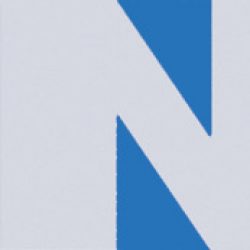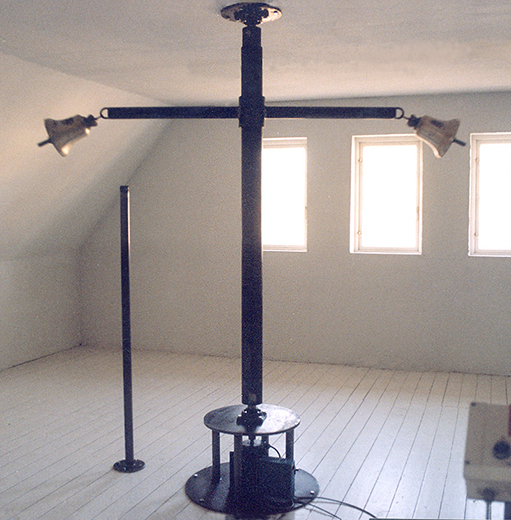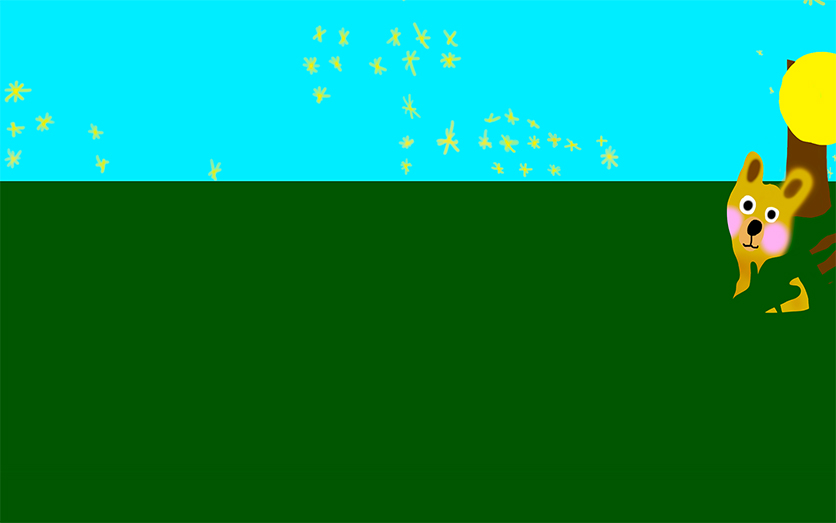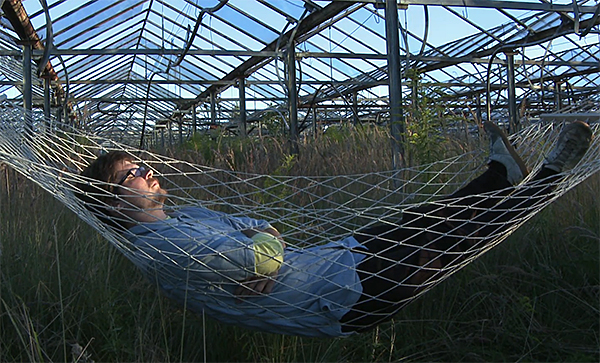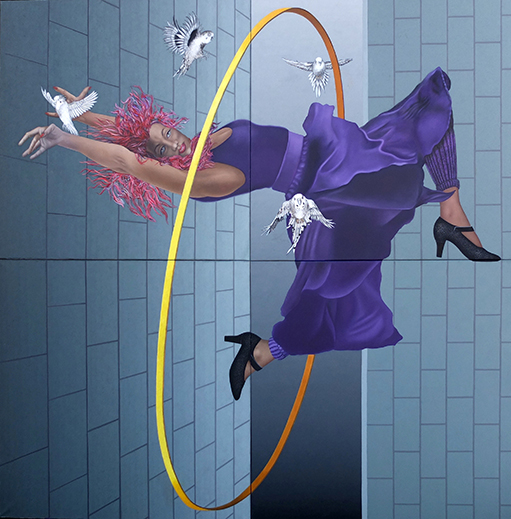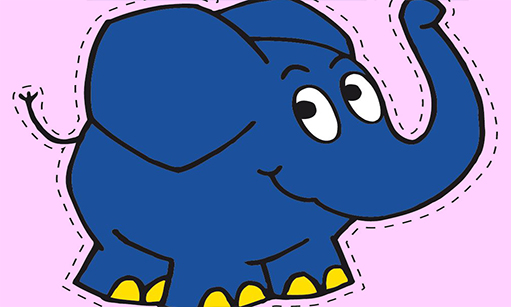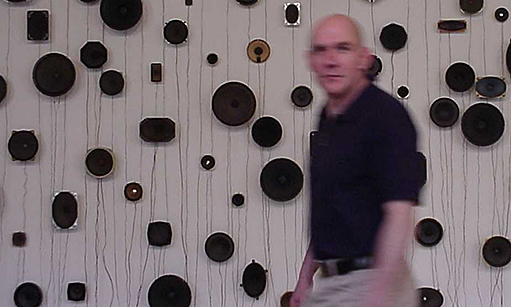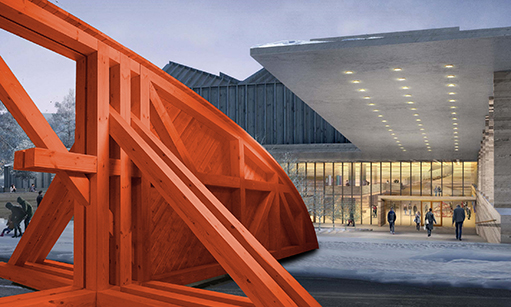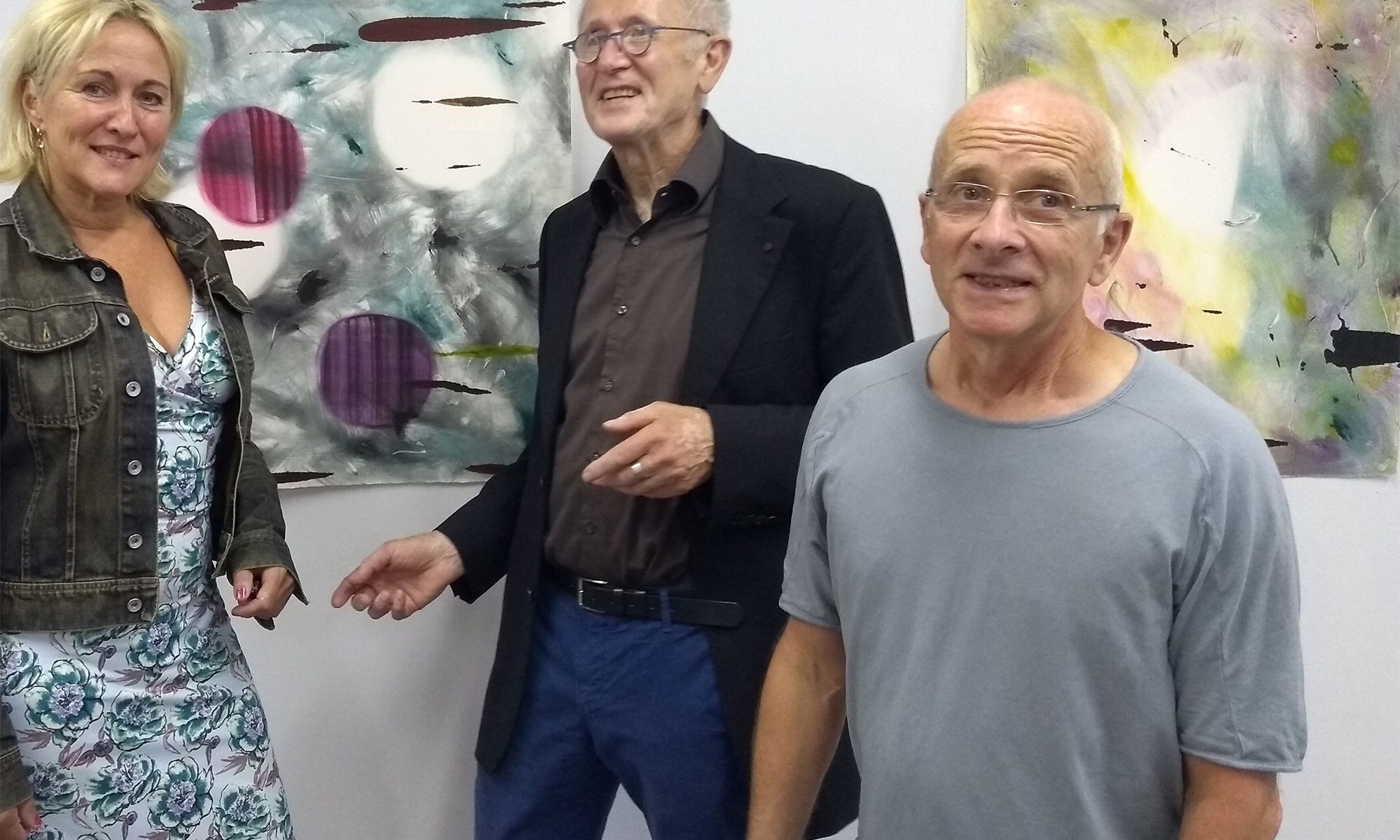An iron column stands clamped between the floor and ceiling, from which two arms point horizontally about one metre cross-shaped outwards at eye level. At the ends hang two bells cast using the traditional clay moulding process. In the “base” there is an electric drive that uses a control module to rotate the column about its own axis. At the beginning of the rotation, the two bells are made to ring when the clappers pass through a vertical bar. With increasing speed, the bells are lifted by the centrifugal force, so that the clappers no longer strike. The clappers do not hit again until deceleration.
Carsten Höller’s construction of 1997 is characterized by the fact that it questions the postulate of the autonomy of the art object and presents it in its dependence on the people who deal with it. The aesthetic appearance is not independent and permanently fixed; it is variable and subject to the interdependencies triggered by the participation of the visitors. Nicolas Bourriaud examined the significance of this relational aesthetic. “Form exists only in the encounter and in the dynamic relationship.
